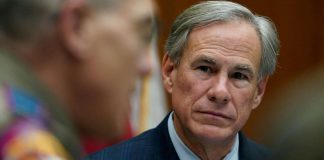MARCH 22, 2020

Federal Reserve Bank of St. Louis President James Bullard predicted the U.S. unemployment rate may hit 30% in the second quarter because of shutdowns to combat the coronavirus, with an unprecedented 50% drop in gross domestic product.
Bullard called for a powerful fiscal response to replace the $2.5 trillion in lost income that quarter to ensure a strong eventual U.S. recovery, adding the Fed would be poised to do more to ensure markets function during a period of high volatility.
“Everything is on the table” for the Fed as far as additional lending programs, Bullard said in a telephone interview Sunday from St. Louis. “There is more that we can do if necessary” with existing emergency authority. “There is probably much more in the months ahead depending on where Congress wants to go.”
Massive Aid
Bullard’s grave assessment of the world’s largest economy underscores the critical need for Congress and the White House to quickly find agreement on a massive aid program. The Fed last week restarted financial crisis-era programs to help the commercial paper and money markets, after cutting interest rates to near zero and pledging to boost its holdings of Treasuries by at least $500 billion and of mortgage securities by at least $200 billion.
“This is a planned, organized partial shutdown of the U.S. economy in the second quarter,” Bullard said. “The overall goal is to keep everyone, households and businesses, whole” with government support. “It is a huge shock and we are trying to cope with it and keep it under control.”
The U.S. central bank bought $272 billion of government debt last week, of the more than $500 billion authorized, which Bullard emphasized should not be seen as a limit.
More if Needed
“This is unlimited and we can go much higher if necessary,” he said. “We are trying to provide as much support as we can to that market.”
Commercial paper funding should provide support for corporations trying to roll over short term debt, Bullard said, and the Fed could look at buying other corporate debt.
“We could certainly look at that,” he said. “We are already supporting very short term funding markets.”
Bullard said Fed purchases of municipal debt are permitted for short term debt, and “that is probably the place we would want to concentrate on here” if the Fed were to go ahead with direct buying. At the same time, he said the Fed would need to be careful with such a program, and it could be problematic to pick and choose which debt to buy, just as European authorities have struggled with purchasing sovereign debt.
Small Businesses
As for small business lending, the Fed would need to set up a “brand new program,” which would be time consuming so it would make more sense to use existing small business lending programs or to have Congress guarantee bank loans, he said.
Bullard said with an aggressive government response, activity should begin to bounce back. “I would see the third quarter as a transitional quarter” with the fourth quarter and first quarter next year as “quite robust” as Americans make up for lost spending. “Those quarters might be boom quarters,” he said.
The goal should be to support American workers and businesses across the board, rather than picking individual companies or industries, such as the airline industry or hotels, for support. The U.S. shouldn’t lose companies or industries because of lack of support, he said.
‘Totally Stupid’
“It is totally stupid to lose a major industry because of a virus,” he said. “Why would you want to do that?”
Bullard urged that unemployment insurance cover 100% of lost income for workers, and call it “pandemic insurance” since the disruption is intended to block the spread of the coronavirus.
The St. Louis Fed’s view of the virus-related shutdowns on the economy is more dire than Wall Street. JPMorgan Chase & Co. expects gross domestic product to shrink at an annualized rate of 14% in the April-June period while Bank of America Corp. and Oxford Economics both see a 12% drop. Goldman Sachs Group Inc. sees a 24% plunge.
Courtesy/Source: Bloomberg










































































































